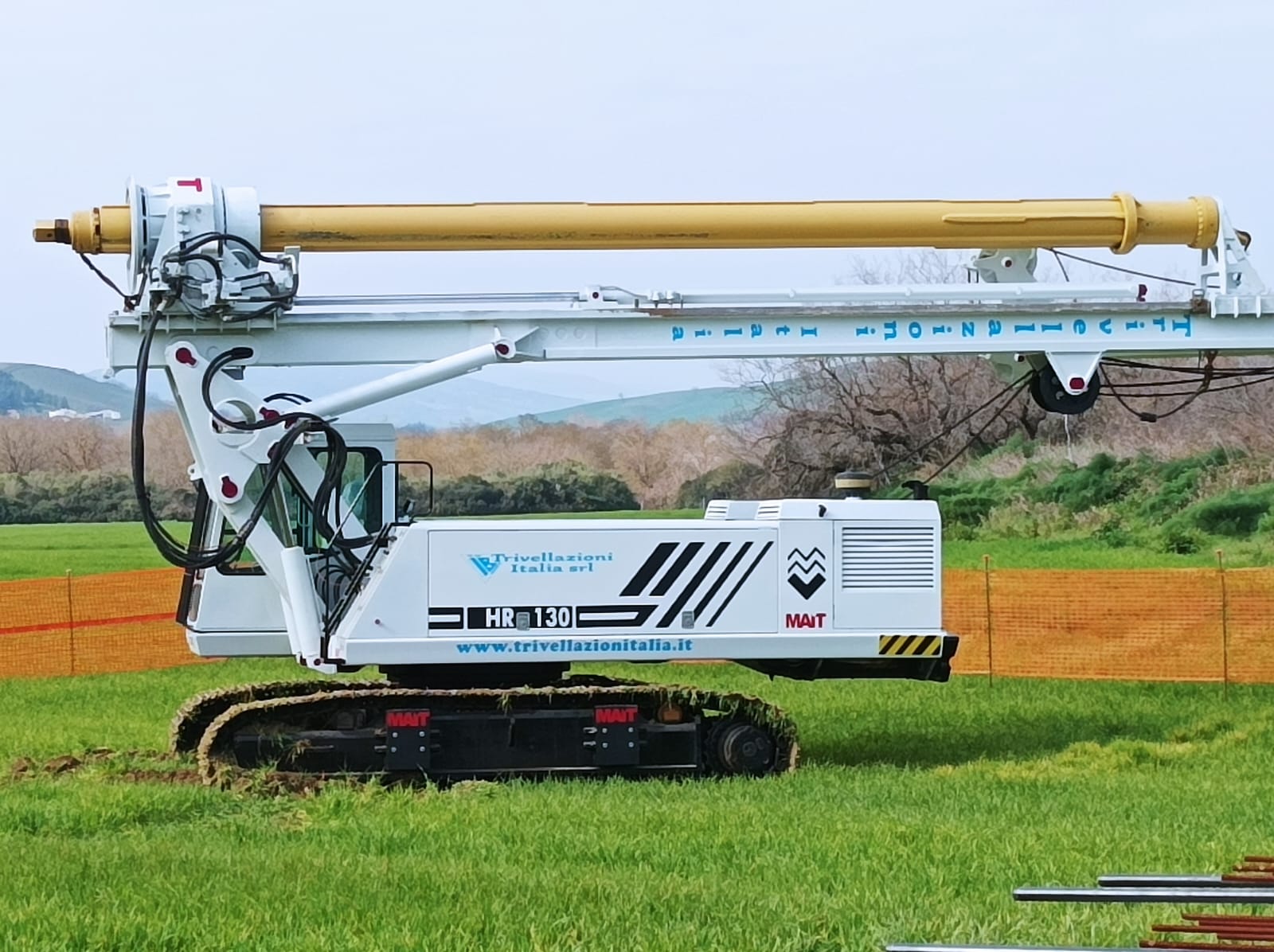Drilling and hydrogeological rehabilitation
Foundation piles are a type of indirect foundations, also called deep foundations, having the peculiarity, compared to the direct foundation, of transmitting a non-negligible part of the vertical load by friction along the lateral surface of the foundation and, depending on the ratio of pile diameter to pile height, with the pressure acting on the bearing plane at the base of the pile.
With this type of foundation, there is the advantage of reducing long-term subsidence by exploiting the resistance by friction and in bearing, of deep and adequately bearing soil layers, going deep beyond any soft and unsuitable soils, strata or cavities.

Drilled piles
Piles obtained by drilling into the ground and extracting a volume of soil approximately equal to that of the pile.
Fixture poles
Poles built off site
Constructed on site and then driven into the ground by thrashing, or by pressure water jetting.
Cast-in-place piles
They vary according to the mode of driving in the metal liner that functions as the formwork and are distinguished into driven-in piles and drilled piles.
Micropiles
These are drilled foundation piles whose dimensions are between 90 and 300 mm in diameter. Their length can vary from 2 to 30 meters, having the shaft consisting of mortar or cement mixture cast in place and a reinforcement generally consisting of a metal pipe or profile.
Their use in generalized soil consolidation is the main reason for the wide success in subfoundation work and anchoring. They are used with increasing frequency in foundation work because of their versatility.
The scope of this indirect foundation means that it is used and required in a variety of situations, such as:
- Consolidation of soils before the execution of direct foundations;
- the construction of anchors/tirants (applications on rockfall barriers, tie-rods for counteracting the overturning of bulkheads, …);
- The consolidation of direct foundations insufficient in bearing capacity to support the superstructure;
- The rehabilitation and/or repair of foundations damaged by external physical and chemical agents (differential subsidence, erosion of bridge piers).
Micropiles are classified according to the mode of injection, which we can distinguish into:
- Gravity micropiles, where the mortar pour is performed at atmospheric pressure;
- Low-pressure micropiles with low-pressure mortar casting;
- High-pressure micropiles, with laying of valved metal pipe and injection of cement mixtures for sheath formation (primary injection) and subsequent injection of cement mixtures through the valved pipe (secondary injection at controlled pressures and sections) for bulb formation.
Tie rods (active/passive/self-piercing)
Tie rods are gaining more and more space in the field of consolidation and completion of retaining structures.
When in place, the tie rod consists of:
- anchor bulb;
- free part, where the reinforcement is free to flow without transmitting appreciable tangential tension to the surrounding soil in which it is sealed;
- anchor header.
Their use can be distinguished mainly into:
- temporary, whose service is expected to last for a variable period (from a few months to a few years);
- definitive (this is the case with landslide consolidations or retaining walls).
These characteristics are determined by the manner in which they are performed, namely by the existence or non-existence of corrosion protection.
Anchorage reinforcement generally consists of strands or bars.
The tie rod head, consisting of plate, bushings and locking wedges, must match the element to be anchored and can match on:
- Concrete beams or diaphragms;
- steel beams.
Piling
It is a technique used when there is a need to protect particular areas or work zones such as embankments, docking piers, etc.
In this method, centrifugally driven concrete sheet piles are driven, through the use of a high-frequency vibrator attached to the crane, into the ground in such a way that they will form a continuous concrete wall when placed in place.
Jet grouting
It consists of injecting a cement mixture into the ground using small nozzles, with pressures up to 600 atm (sometimes higher).
This technique is a viable alternative to systems usually used to consolidate existing foundations, form foundation blocks, create trenches with anti-soulage and anti-siphon functions, create waterproofing, and reclaim land intended for relief.
The characteristics of the soil after jet grouting treatment depend on the nature of the soil and the amount of mixture injected per unit volume.
